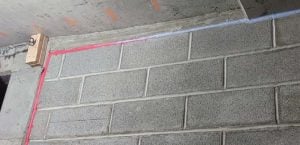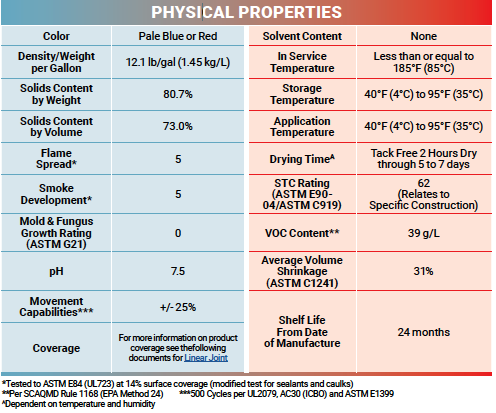What Color is Your Firestop?
It is safe to say that many within the firestopping industry have at least a bit of a preconceived notion that the default color for firestop is some shade of red.

Figure 1
This is since most firestop manufacturers typically market their primary firestop sealant with a red pigment. This color scheme is especially true for intumescent materials. However, there are many firestopping sealants and sprays with alternate colorings and these materials are perfectly acceptable if subjected to the appropriate testing and installation techniques just as the more common red products are.
The building codes do not mandate any specific color for firestopping products and speak only in regard to the relevant test standards necessary to demonstrate firestops meet appropriate performance requirements and where firestop installations are necessary within a building. Some projects may prescribe a certain color for firestop sealants or sprays if the owner or architect include language within the plans and/or specifications. However, this is simply a matter of preference and has no basis in the building codes.

Figure 2
Having multiple color options for firestop materials benefits both manufacturers and end users at the jobsite. STI can set our intumescent sealants apart from non-intumescent products by assigning each material a specific color for example. It is also common practice to differentiate sealants or sprays intended for use in joint applications from materials for through penetrations by using distinct colors. As the products are being installed or inspected in the field, unique colors for different materials aids in quick and easy identification. That being said, what should we make of the installation shown in Figure 1 where different color sealants meet along the length of a joint system firestop?
The mixing of two distinct materials definitely warrants some closer inspection. One of the primary concerns here is that the materials may originate from different manufacturers. If that is the case, it might be difficult to determine whether the materials are chemically compatible and there is also the challenge of demonstrating this is a valid firestop system since there is likely no testing to support it. The ideal solution is that a single manufacturer has provided both materials and they are in fact the same product with the only difference being their color.
The single manufacturer scenario describes the situation in our “red meets blue” joint installation. The sealants in question are both SpecSeal® ES Elastomeric Sealant which offers the option of a pale blue color or red color as noted in the “Physical Properties” portion of the product data sheet, and shown in Figure 2.
STI recognizes the benefit of allowing flexibility in terms of product coloring and offers a number of materials in alternate colors. Our Customer Service can provide details on the specific options. Red firestop sealants and sprays might be the default answer, but the building codes do not require one color over another, and alternate colors are available from STI to facilitate installation and inspection for your project.
This article originally appeared in The Burn – Summer 2022 Wrap up.






